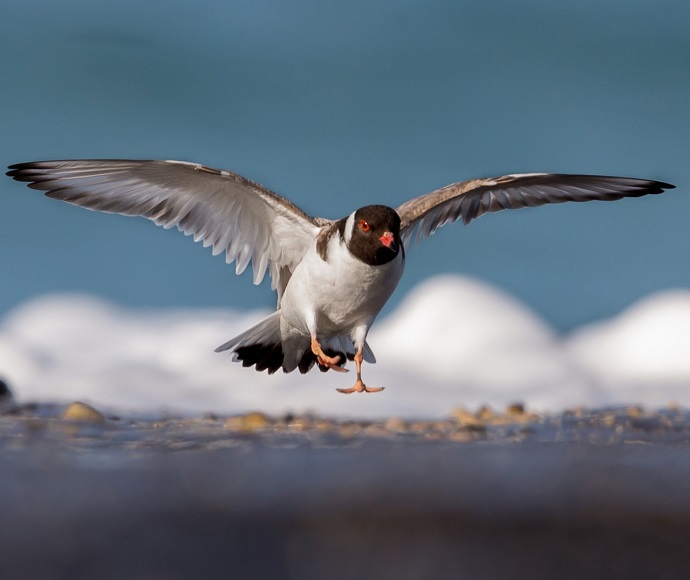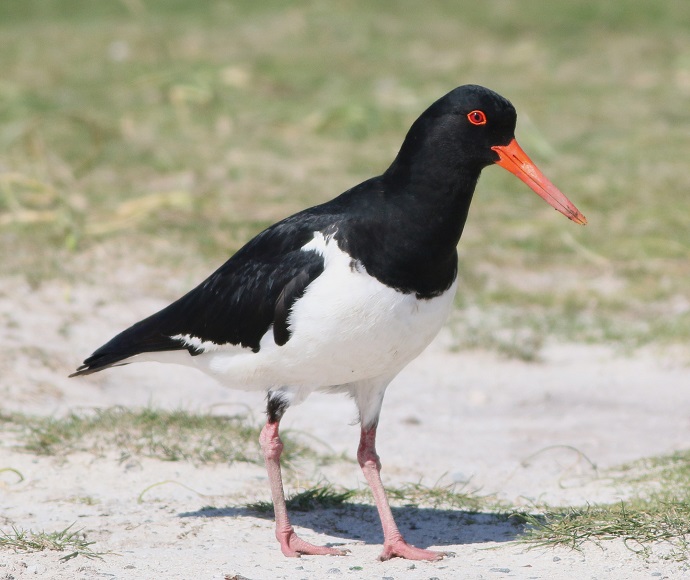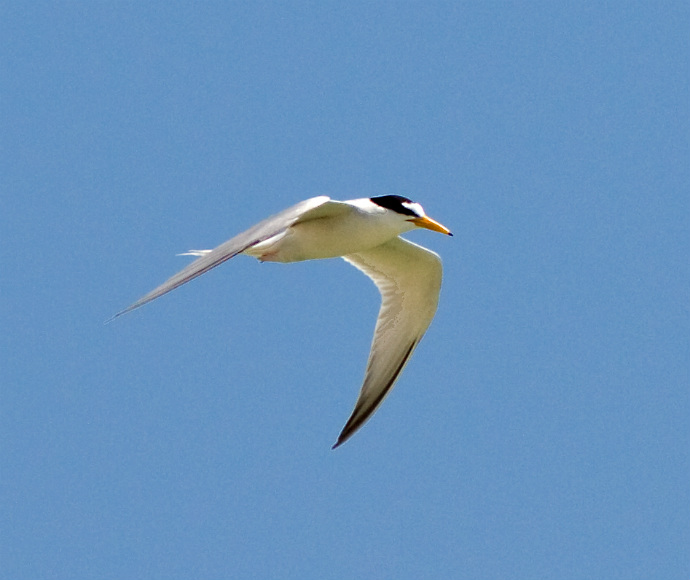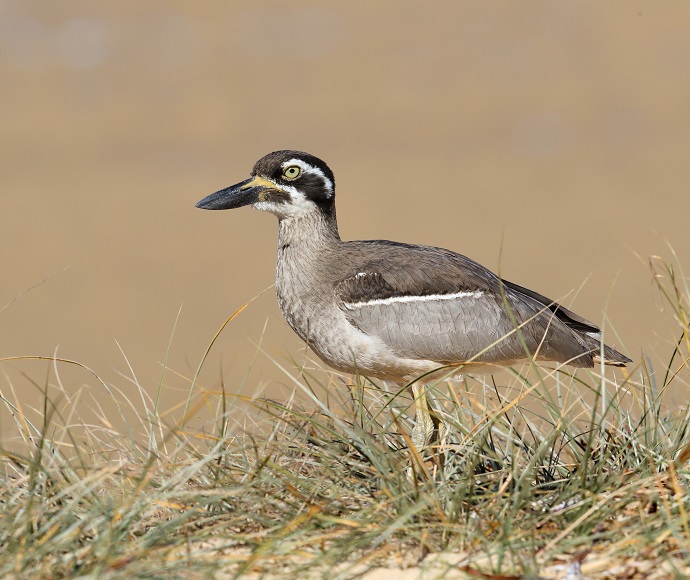From August to March, threatened shorebirds nest and raise their chicks on our beaches. People and their pets visiting the shore in the warmer months can disturb the birds, adding to the many threats they’re already facing.
Luckily, it’s easy to give shorebirds space and help them successfully nurture the next generation. Let’s all share the shore.
How to share the shore
There are a few simple things we can do to ensure our threatened shorebirds have the best chance at raising their chicks during nesting season.
- Read and respect signage and fences.
- Stick to the wet sand – this greatly reduces your chances of accidentally disturbing chicks and nesting birds.
- Give shorebirds space – and share the shore.
In addition, remember the following.
- Leash your dog and walk on designated dog beaches only.
- Pay attention to signs and fences and keep dogs away from nesting areas.
- Drive only on designated beaches.
- Always drive on the hard sand, below the high tide mark.
- Avoid driving at high tide.
- Clean up and take all tackle and rubbish with you.
- Avoid pumping for bait on mudflats or beaches where shorebirds are nesting – this is where they collect food for their growing chicks.
- Keep your distance from shorebirds.
- Don’t overstay your welcome.
- Respect beach closure signs, fences and beach driving rules.
- Be mindful of your online impact when sharing photos.
Meet the shorebirds
Scientific name: Thinornis cucullatus cucullatus
Status: Critically endangered
Affectionately known as ‘hoodies’, there are fewer than 70 hooded plovers left in New South Wales. All of them live on the south coast. To nest, they create a small scrape in the sand and typically lay 2 or 3 eggs. They incubate their eggs for around 28 days and share care for their young.
Scientific name: Haematopus longirostris
Status: Endangered
These distinct and striking birds forage on exposed sand, mud flats and rocky reefs at low tide. Their nests are shallow scrapes in the sand above the high tide mark. They lay 2 or 3 eggs each time they nest.
Scientific name: Sternula albifrons
Status: Endangered
These aerodynamic high-fliers migrate from eastern Asia every year. They arrive on our shores around September to nest in shallow scrapes in the sand over summer. Although we can’t control the sort of reception they receive overseas, we can certainly show them some hospitality while they’re here and avoid trampling their nests!
Scientific name: Esacus magnirostris
Status: Critically endangered
These large waders occur in the northern half of coastal New South Wales. Pairs nest in shallow scrapes in the sand or gravel and only lay one egg, but will re-lay if their first attempt to breed fails. Both parents defend the nest and care for their young, which become independent when they’re around 7–12 months old.
Why these shorebirds are threatened
Shorebirds face many threats during the nesting season:
- Coastal development means there are fewer suitable nesting sites, and extreme weather like storms can wash away nests.
- Eggs or chicks can perish in the hot sun or freeze in the chilly wind.
- Baby birds can't and won’t stand a chance against predators like foxes, cats, dogs and gulls.
The beach is a busy place for threatened shorebirds to lay eggs and raise chicks. Human disturbance adds major challenges for endangered beach nesting birds:
- Shorebirds perceive humans and dogs as threats. Their attention shifts to this perceived danger, interrupting feeding and leaving eggs or chicks exposed and vulnerable. Dogs can also kill shorebirds, destroy nests and disrupt vital behaviours essential for their survival.
- Eggs and chicks are well-camouflaged and hard to see, resulting in accidental trampling by walkers or vehicles.
- Nesting birds become entangled in fishing tackle and rubbish, resulting in injury and death.
- Repeated disturbance of nesting birds can disrupt the parent’s ability to care for their chicks, which often leads to starvation of chicks.
Avian influenza
A highly contagious and serious strain of bird flu, known as H5 avian influenza (H5 bird flu), may arrive in Australia soon.
If you come across multiple sick or dead birds or mammals:
- Avoid contact with sick or dead wildlife and their environment. Do not allow pets to touch or eat sick or dead wildlife.
- Record what you see and the location the animal was found and take photos or videos.
- Report it to the Emergency Animal Disease Hotline on 1800 675 888.
Find out more about avian influenza.
Get involved with Share the Shore
We want to partner with you! If you’re a local council, cafe, community group, organisation or individual, your support can make a real difference for shorebirds. For communications and partnership opportunities, reach out to us at [email protected].
Contact us
Saving our Species Program
Email: [email protected]
Stay in touch
- Subscribe to the Saving our Species newsletter.
- Follow us on Facebook, Instagram, YouTube, LinkedIn or X.
- Search the Public register of Saving our Species conservation strategies




